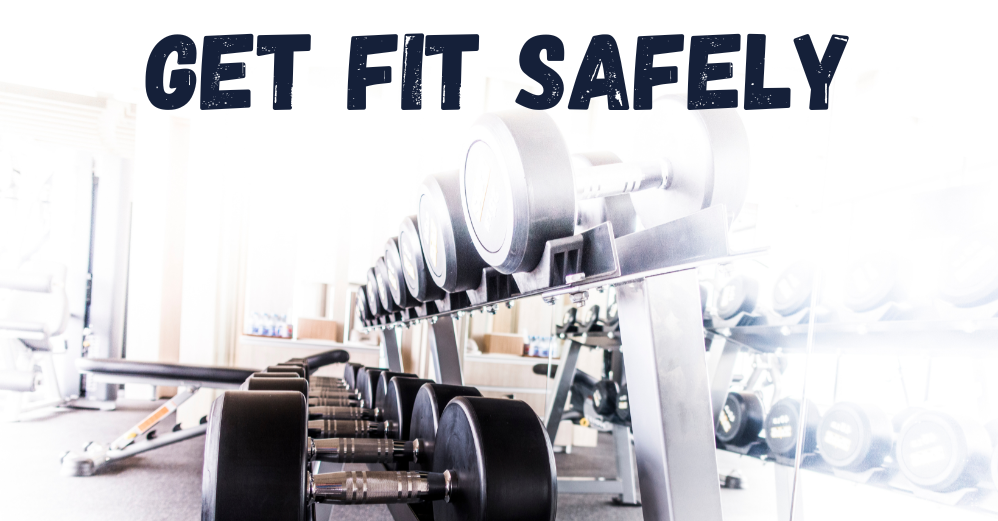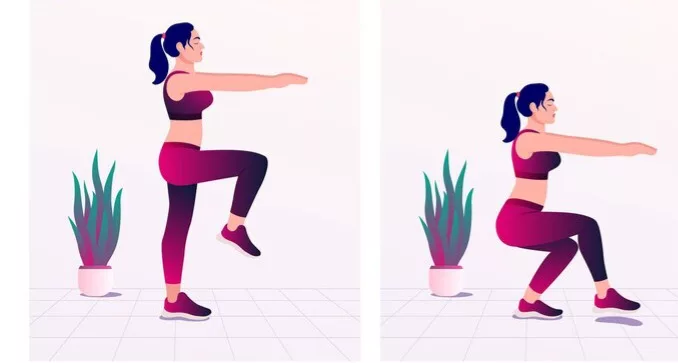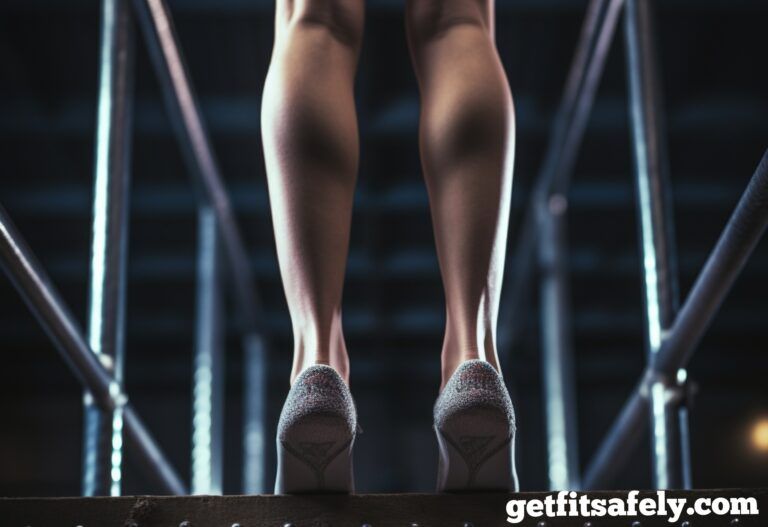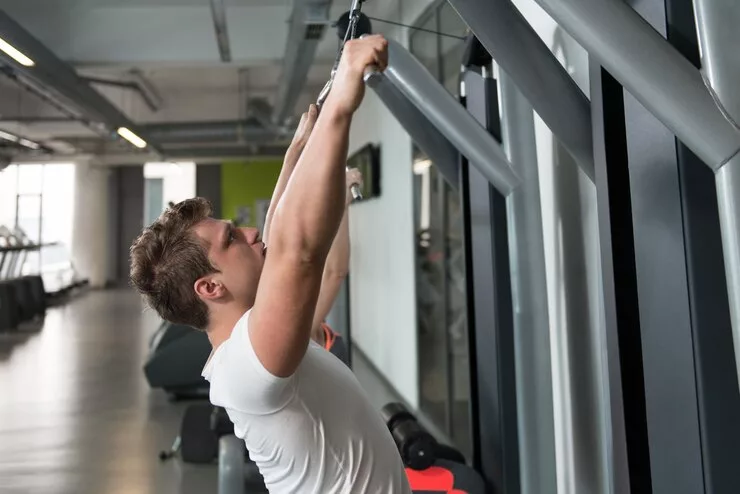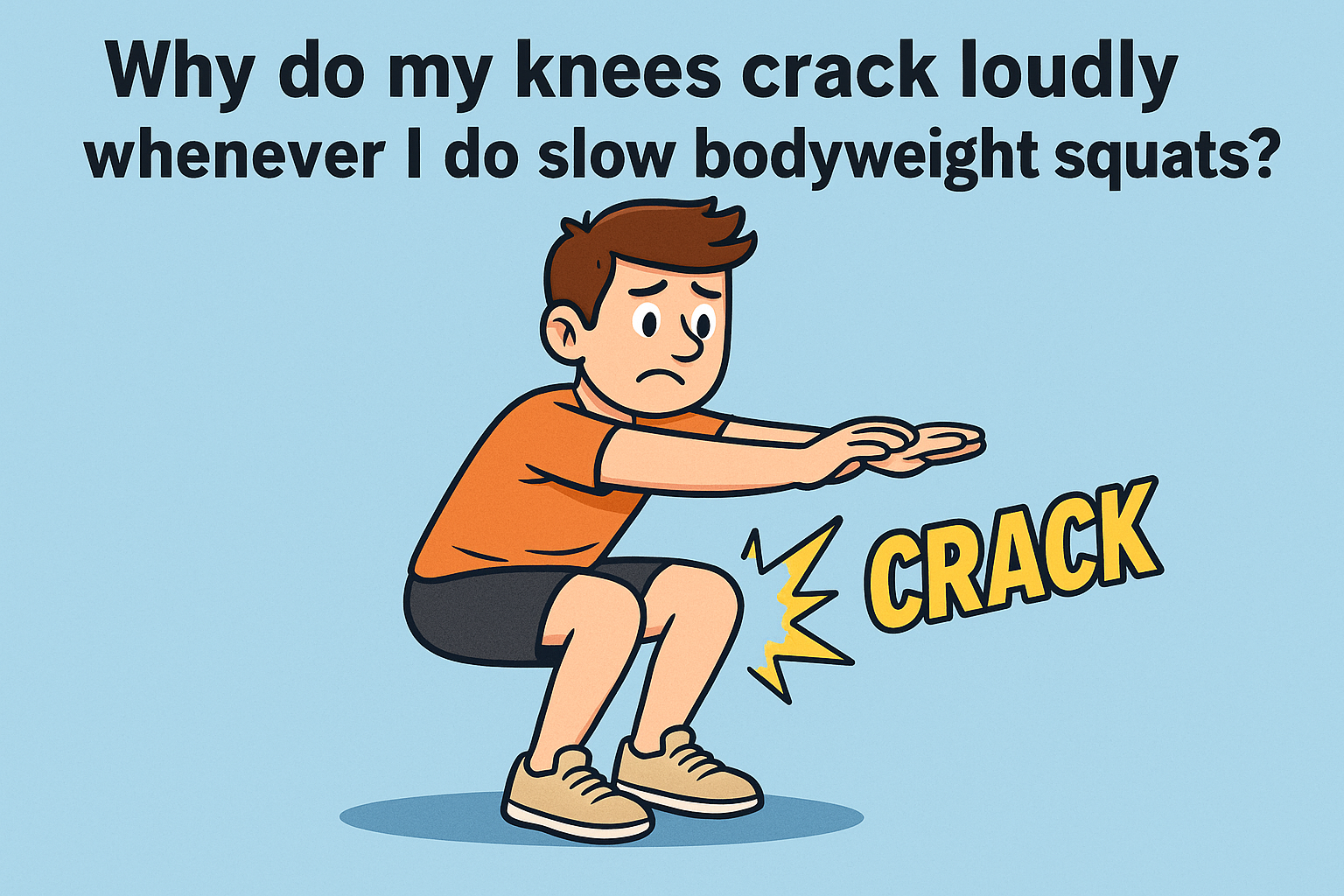No cramps with lunges. No cramps with classic squats. Not even with Bulgarian split squats.
But the moment you try a slow, controlled pistol squat… you drop like a sack of potatoes.
Not because you’re weak.
But because your quad turns into a steel cable twisting in on itself.
So let’s get to the point:
Why do you cramp during slow pistol squats but not with other leg exercises?
Here’s the no-BS breakdown.
A cramp is an emergency response, not a body malfunction
When your quad cramps, it’s not because it’s gone rogue.
It’s because it’s trying to protect you from damage.
And the star of the show is the rectus femoris — the only quad muscle that crosses both the hip and the knee.
During pistol squats, especially slow ones, this muscle has to:
- Stretch to the max as you flex the hip and knee at the same time
- Contract from a stretched position
- Stabilize the hip, thigh, and knee… all on one leg
This creates extreme passive tension under load.
The brain sees this as a threat.
And says:
“Shut it down! This muscle is maxed out, under stress, and we’re unstable.”
The result? A protective spasm.
Which you feel as a cramp.
It’s not dehydration. It’s your nervous system slamming the brakes.
Why does it only happen when you go slow?
You can do explosive pistol squats just fine.
But the moment you slow down, the leg short-circuits. Why?
Because more time under tension = more neurological stress.
And if your stabilizers aren’t ready, the quad takes the full load.
In fast movements, inertia helps.
In slow ones, it’s just you and your muscles. Period.
And if the rectus femoris is already tired, unsupported by the glutes or hamstrings, it freaks out.
The cramp isn’t the squat’s fault.
It’s the combo of slowness and muscular imbalance.
Quad dominance: your quad is tired of being the parent
Here’s the uncomfortable truth:
If you’re quad-dominant, slow pistol squats are your final exam.
Lazy glutes. Showy hamstrings that don’t actually help.
A core that only exists for ab selfies.
So the quad has to do it all:
- Knee extension
- Hip control
- Lateral stability
- Braking the descent
All on its own.
And when one muscle does everyone’s job, it eventually breaks down. Cue the cramp.
How to eliminate quad cramps in pistol squats: the practical guide
This isn’t about “getting used to it” or “stretching more.”
It’s about strategy.
Here’s what to actually do:
- Don’t drop to full depth right away: use a bench or plates to stop before the danger zone
- Use assistance: TRX, rings, stick, wall — anything to reduce tension
- Activate glutes first: hip thrusts, glute bridges — anything to wake them up
- Train hamstrings separately: Romanian deadlifts, slow step-ups, sliders
- Strengthen stabilizers: obliques, deep core, calves, glute medius
- Controlled mobility: not just flexibility, but active control
- Assisted eccentrics: go down slow with help, come up with both legs
- Breathe!: holding your breath makes cramps easier to trigger
- Do slow split squats before pistols: start with well-controlled Bulgarians
Your foot might be the real culprit (even if it doesn’t seem like it)
In a pistol squat, your only point of contact is your foot.
If it’s not active, the load shifts to the compensators.
Guess who compensates? The quad.
Especially if you lift your heel slightly to avoid falling back.
That overloads the front of your thigh even more.
Try this:
- Do pistols barefoot
- Engage the foot arch
- Distribute weight between heel, big toe, and pinky
- Engage ankle and glute together
Sounds like small stuff? Try it and feel the difference.
Even your brain can trigger the cramp: it anticipates failure
If before you even descend you’re thinking, “I know I’m gonna cramp”… guess what? You’ll cramp.
Mental tension isn’t neutral.
Your nervous system reads anxiety and stiffness as instability.
Instead of relaxing, it locks everything up.
Boom. Cramp.
Try this:
- Take a deep breath before going down
- Smile (yes, it actually works)
- Don’t think “don’t cramp,” think “engage glutes and core”
- Visualize a stable movement, not a trainwreck
The way you enter the rep changes everything.
If your warm-up sucks, it’s on you
If you jump into pistol squats after 10 jumping jacks, don’t be surprised if you cramp.
Here’s a proper warm-up to get ready:
- 10 high step-ups per leg
- 10 slow Bulgarian split squats with pause at the bottom
- 20 seconds of isometric lunge with glute squeeze
- 10 banded kickbacks per leg
- 2 assisted slow pistols per leg to halfway
This isn’t stretching.
It’s functional activation.
So you hit the pistol squat already “tuned in.”
Do I really need to do slow pistol squats or can I skip them?
Good question: no, they’re not mandatory.
But if you master them, you gain:
- Off-the-charts joint control
- Single-leg stability that boosts all your other lifts
- Functional strength that carries over to sports and daily life
- Muscle awareness that transfers across your whole lower body
But if they train your frustration more than your quads, you can sub them out for similar, more manageable moves:
- Slow Bulgarian split squats
- Skater squats with support
- Controlled step-downs from a box
- Rear-foot elevated tempo squats
Then return to pistols gradually, with a better-prepped body.
When’s the best time to do them: beginning, middle, or end of workout?
Doing them cold at the start is a terrible idea — especially if you cramp easily.
Your nervous system’s still in pajamas.
Add them after a solid activation and pre-fatigue phase, when:
- Your myofascial chains are “warm”
- Your nervous system is already engaged
- Your glutes, core, and stabilizers are awake
Ideal? After your main compound lifts, but before accessory work.
That way you have focus — and blood in your muscles.
What role does breathing play, and how can it save you from cramps
Most people don’t notice this, but they hold their breath at the worst point in the descent.
This causes:
- Increased internal pressure
- Poorer core control
- More overall tension = higher cramp risk
The fix?
Learn to coordinate your breath with the movement:
- Inhale during the start of the descent
- Keep a light abdominal brace
- Exhale slowly on the way up
This helps release excess tension and better distribute the load.
How to tell if the cramp is just nervous system or actual injury risk
If the cramp:
- Goes away in a few seconds
- Leaves no lingering pain
- Doesn’t show up at rest or during other movements
… it’s almost definitely a nervous system response — not damage.
But if:
- The muscle still hurts hours later
- You get sharp pain even without moving
- You feel tightness during basic movements
… you may have reached a dangerous tension threshold.
In that case, get checked by a physical therapist.
How long does it take to stop cramping?
It all depends on how deep the neuromuscular imbalance goes — and how aware you are of your movement.
But in most cases — if it’s not a medical issue — you’ll see real change in 3 to 4 weeks of targeted work.
Here’s what “targeted work” means:
Glute work
At least 2 glute-specific exercises per session (e.g., hip thrusts, glute bridges, slow step-ups, banded kickbacks)
Focus on real contraction, not heavy weight
Core activation
Not passive crunches or planks — but dynamic, anti-rotational moves (e.g., dead bugs, Pallof presses, planks with reaching)
Just 6–10 minutes can fire up your center and improve pistol stability
Controlled mobility
No random stretching — use movements that teach your body how to move precisely in its range: ankle rocks, hip CARs, foot-focused squat isometrics
Do these before pistols, not after
Progressive technique
Start with simpler versions (box pistols, TRX, counterbalance)
The goal is never to hit the cramp point — just to get closer with more control
Every 4–5 days, push a little further
If you train 2–3 times per week consistently:
- In the first week, the cramp hits less violently
- By week two, it shows up later, maybe after 3–4 reps
- Within a month, you might finish 3–4 slow pistol squats with no sharp pain — just honest effort
It won’t happen overnight.
You can’t just “keep trying till it works.”
But it will happen.
With smart progression, active muscles, solid technique, and distributed tension, the cramp stops being a roadblock.
And becomes just a story to tell.
Conclusion
If you cramp during slow pistol squats, it’s not because you suck.
It’s because your body is smarter than your impatience.
It’s saying:
“We’re not stable here.”
“Some muscles aren’t doing their job.”
“You’re asking too much from one area.”
The solution?
Don’t avoid it. Understand it. Prepare better.
And when you fix balance, activation, and control, the cramp disappears.
Not because you dodged it — but because you conquered it.
One day, you’ll drop into a slow, clean, rock-solid pistol squat…
No cramp.
No panic.
Just power and control.
Like a ninja balancing on one finger.
Only the finger… is your thigh.

